Crimson-breasted Shrike
Posted: Fri Mar 14, 2014 6:12 pm
739. Crimson-breasted Shrike (Formerly known as Crimson-breasted Boubou) Laniarius atrococcineus (Rooiborslaksman)
Order: Passeriformes. Family: Malaconotidae
Description
22 cm. The head, bill and back are black with a white wing bar while the underparts are entirely scarlet.
The sexes are alike. A yellow-breasted form is occasionally seen. Young birds have a mottled and barred buff-brown appearance with a pale bill.
Distribution
Angola; Botswana; Namibia; northern areas of South Africa; Zambia; western Zimbabwe.
Habitat
It prefers arid habitats (Kalahari thornveld, Acacia savanna and semi-arid scrub).
Diet
Mainly insects (ants, beetles, caterpillars), often foraging on the ground for ants or fallen fruit.
Breeding
Monogamous. Both sexes construct the nest, which is a tidy cup made almost entirely of Acacia tree bark, collected from trunks and branches about 50-90 m from the nesting site and lined with grass and rootlets. It is usually bound with spider web to a fork in the main stem of a plant, or occasionally onto a horizontal branch. Most of the construction work is done in the early morning, and it is usually complete after about 4-6 days. Egg-laying season is from August-January, peaking from October-November. It lays 2-3 eggs, which are incubated by both sexes for about 15-17 days. The chicks are fed and brooded by both parents, leaving the est at about 18-20 days old. Although they forage independently, they stil come back to roost with their parents, sometimes only leaving in next years breeding season.
Parasitised by Black Cuckoo.
Call
The main call is loud and fast tyo-tyo or quip-quip and variations thereof, either solo or in duet. Listen to bird Call.
Status
Common resident. Near-endemic, sedentary and usually found singly or in pairs.
Order: Passeriformes. Family: Malaconotidae
Description
22 cm. The head, bill and back are black with a white wing bar while the underparts are entirely scarlet.
The sexes are alike. A yellow-breasted form is occasionally seen. Young birds have a mottled and barred buff-brown appearance with a pale bill.
Distribution
Angola; Botswana; Namibia; northern areas of South Africa; Zambia; western Zimbabwe.
Habitat
It prefers arid habitats (Kalahari thornveld, Acacia savanna and semi-arid scrub).
Diet
Mainly insects (ants, beetles, caterpillars), often foraging on the ground for ants or fallen fruit.
Breeding
Monogamous. Both sexes construct the nest, which is a tidy cup made almost entirely of Acacia tree bark, collected from trunks and branches about 50-90 m from the nesting site and lined with grass and rootlets. It is usually bound with spider web to a fork in the main stem of a plant, or occasionally onto a horizontal branch. Most of the construction work is done in the early morning, and it is usually complete after about 4-6 days. Egg-laying season is from August-January, peaking from October-November. It lays 2-3 eggs, which are incubated by both sexes for about 15-17 days. The chicks are fed and brooded by both parents, leaving the est at about 18-20 days old. Although they forage independently, they stil come back to roost with their parents, sometimes only leaving in next years breeding season.
Parasitised by Black Cuckoo.
Call
The main call is loud and fast tyo-tyo or quip-quip and variations thereof, either solo or in duet. Listen to bird Call.
Status
Common resident. Near-endemic, sedentary and usually found singly or in pairs.
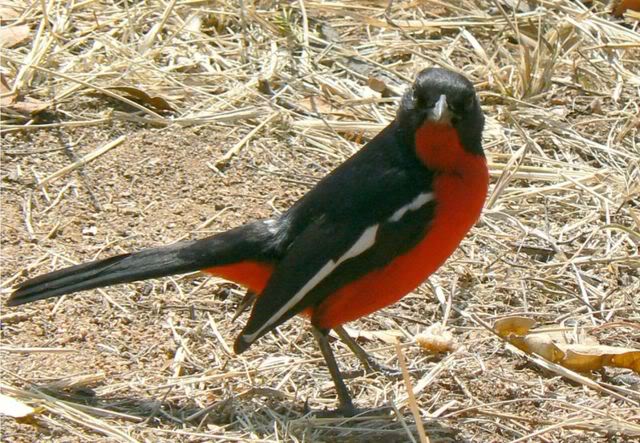

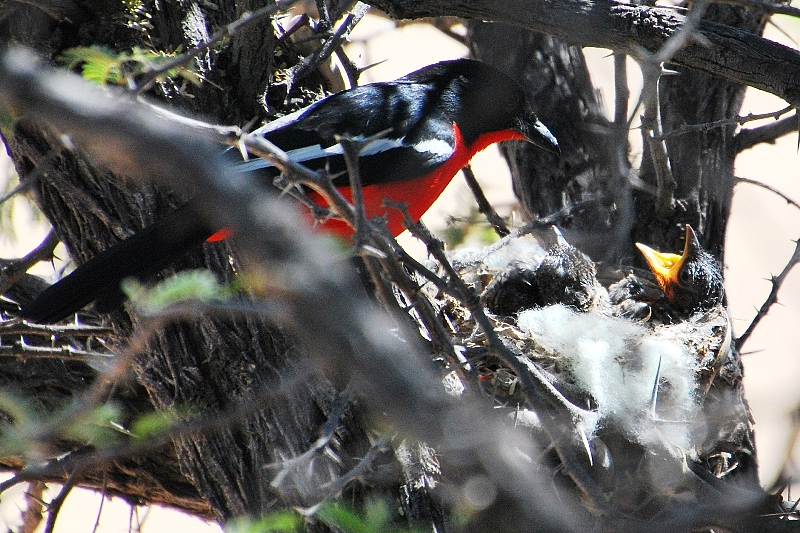 © Mel
© Mel © Mel
© Mel © Mel
© Mel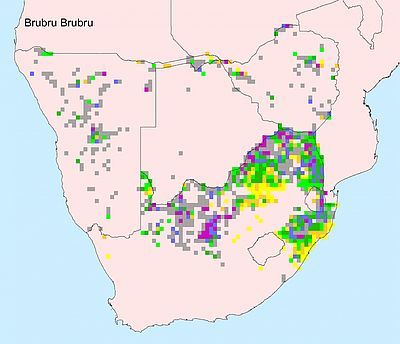
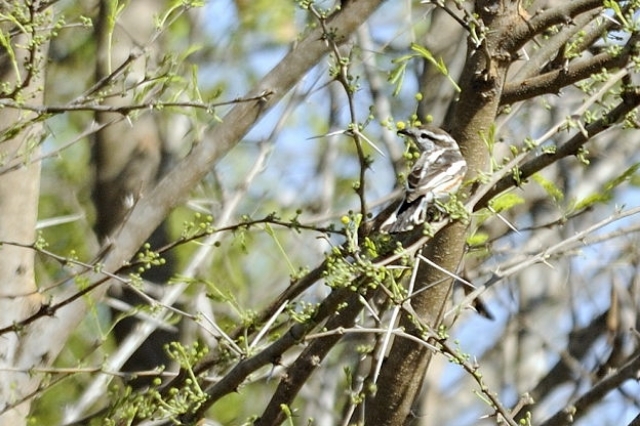 © Dewi
© Dewi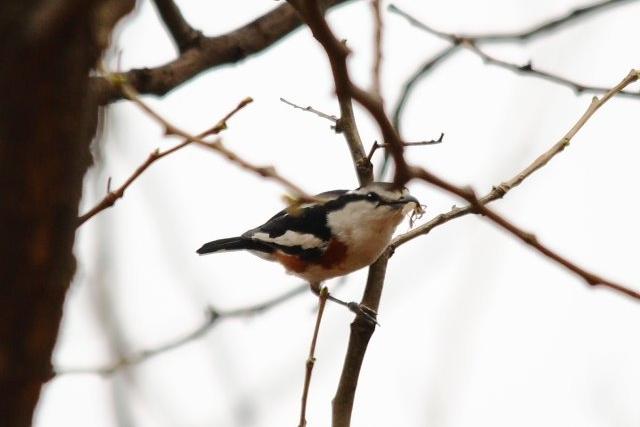 © Flutterby
© Flutterby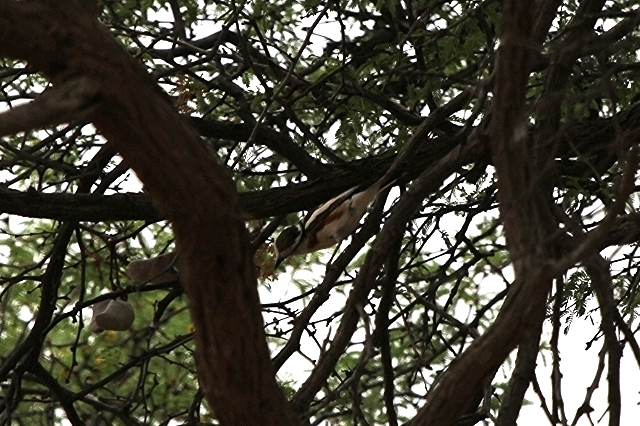 © Tina
© Tina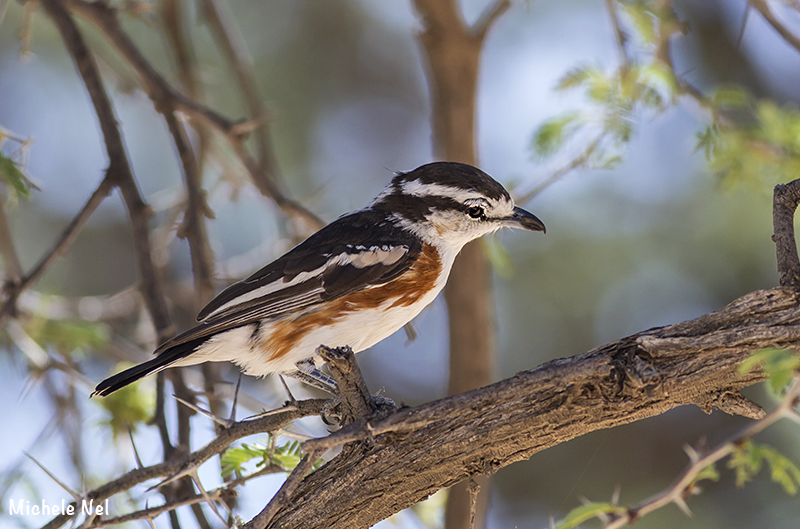

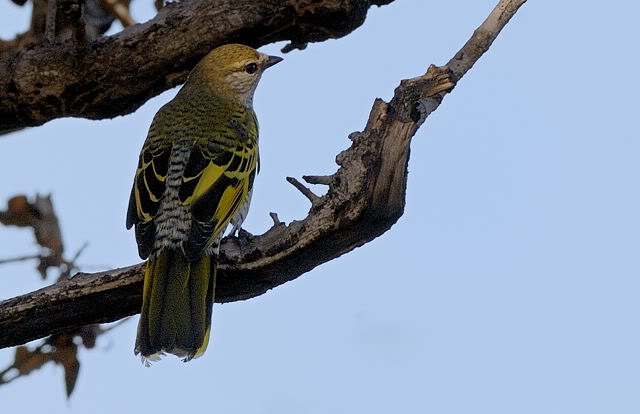 © Dewi
© Dewi